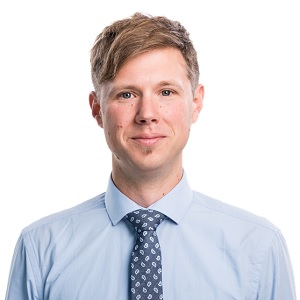Doing applied science
How to do science is a huge topic. I intent to treat it utterly wrong here by not giving it the depth it deserves. Rather, I want to summarize some key points that might be beneficial for students facing the challenge of writing a first scholarly thesis (“wissenschaftliche Arbeit”). As some of these students will have German as their first language, I will translate some important phrases.
What is science?
The application of the scientific method to gain knowledge (into some phenomenon, to ultimately answer a question of interest). “Scientific method” thereby describes the following cycle of experimenting and theory formation (“Theoriebildung”) [Newton, 1687][Vardy, 2010]:
- Experimenting : Based on your current understanding of the phenomenon, you have a creative idea (hypothesis) of what else you should be able to observe, but what has not been observed yet (i.e., your current theory, which just means your current “understanding of the phenomenon”, enables you to predict future events). You design an experiment that either supports your hypothesis or enables you to reject it (at least partially).
- Theory formation: Based on your observations in your experiment, you improve your original theory (world model) by either incorporating your hypothesis into this body of knowledge, or rejecting the idea. Your now improved theory gives rise to new hypotheses, for which you design experiments. This by the way means that scientific discovery comes by a certain well-defined process (the scientific method), or otherwise it might be a discovery but not scientific. It means that experiments are not conducted at random, but are carefully planned, with two possible, specific outcomes in mind (that lead to rejection or acceptance of the hypothesis).
What is applied science?
Applied science is the scientific method applied not just to any phenomenon, but to problems that arise in “everyday life” and which’s solution directly improves issues at home, at work, in business, or in the society at large.
The distinction between basic and applied research (“Grundlagenforschung und angewandter Forschung”) thus is the origin of the research question (“Forschungsfrage”) – the phenomenon to consider. The vast majority of research nowadays is applied, irrespective of the person/institution it is conducted by.
What is a scholarly thesis (or report)?
It is a concise, accessible, well-written report of the findings of some cycles through the scientific method. It starts from a research question, motivates it (why is it important to solve this problem?), and gives a concise overview of the state of the art (what have others done so far?).
It then focuses on one specific novel insight from one’s own research (not several aspects; no side discussions; just one aspect!) and argues for its adoption into the state of the art. The argument can be either theoretical (by proof) or empirical (by verifiable experimental results).
Scholarly work is meant to be read, understood and continued by others. It thus is everything but a formal, dry, difficult-to-read technical text. It is a means of communication. It also is a means to preserve knowledge, thus it has to be chrystal-clear in its statements, and all claims have to be substantiated either by reference to the work of others (hence science is said to be “standing on the shoulders of giants” [Newton, 1676]) or by own extensive proof that one’s conclusions are right. Scholarly work intents to convince the reader by argument.
How to find a research question?
In applied science, research starts from a question of practical importance – e.g., “how to convert pictures (scans) of musical scores to machine-readable notation” (to use the example of a current research project). You then abstract this question to a level where it is comparable to other published work. For example, we might be (in fact, we are not) the first ones to convert images of musical notation to machine readable form – but we are definitely not the first to convert images of any notation to machine readable form, as there is a long-standing strand of research called “optical character recognition” (OCR), concerned with converting printed text to ASCII files.
Having found a suitable level of abstraction allows one to review the scientific literature in order to get an overview of what others have done, to further use this knowledge to solve the original problem. This might involve looking into different domains of research, as applied research questions typically are interdisciplinary in nature (at least they lie at the intersection of some subdisciplines within a certain field). This surveying opens one’s eyes for the real research question: as the original question of practical importance probably differs from the abstract one considered in the scholarly papers, there exists a gap between the proposed solutions in the literature and any suitable solution to the application problem. In the example above, OCR cares only for 1D-sequences of a small number of fixed symbols, while musical notation involves 2D compositions of a tiny set of base symbols to a huge set of compound symbols (chords etc.).
The final research question then (ideally) is: how to close the identified gap between the state of the art and the abstracted question of practical importance. In a less fortunate setting, the research question thus identified only solves an intermediate issue on the way to solving the practical problem. It might thus be much more detailed and of lesser impact than the original question, but its answer will be part of the grand solution. Your research question will thus most likely contribute not only to a solution to the original applied research problem, but also advance the researched state of the art in adjacent areas.
References
[Newton, 1687] Isaac Newton, “Philosophiae Naturalis Principia Mathematica”. 1687.
[Vardi, 2010] Moshe Y. Vardi, “Science has only two legs“. Communications of the ACM, Vol. 53 No. 9, Page 5, 2010.
[Newton, 1676] Isaac Newton, “Letter from Sir Isaac Newton to Robert Hooke”. 1676.
